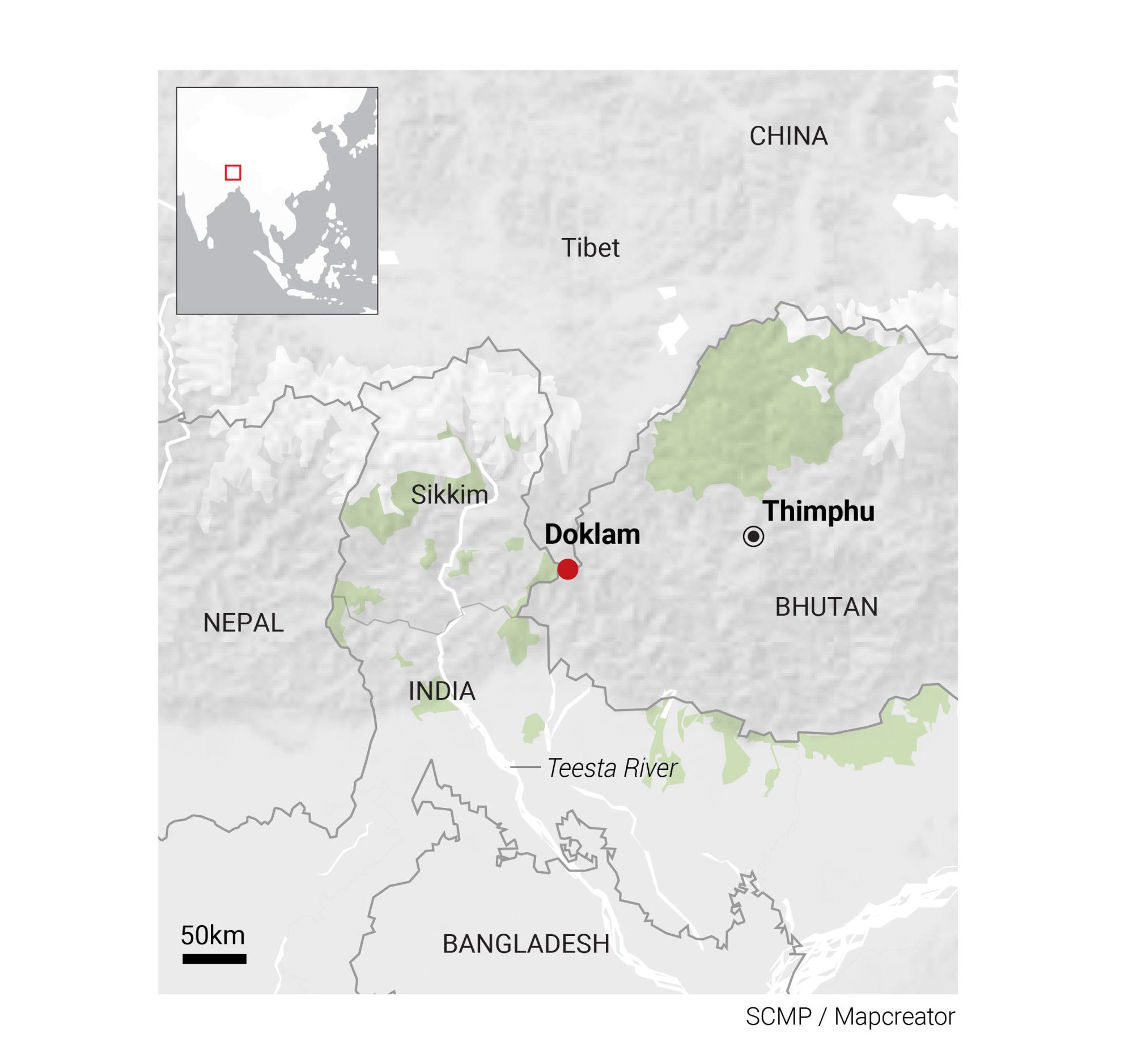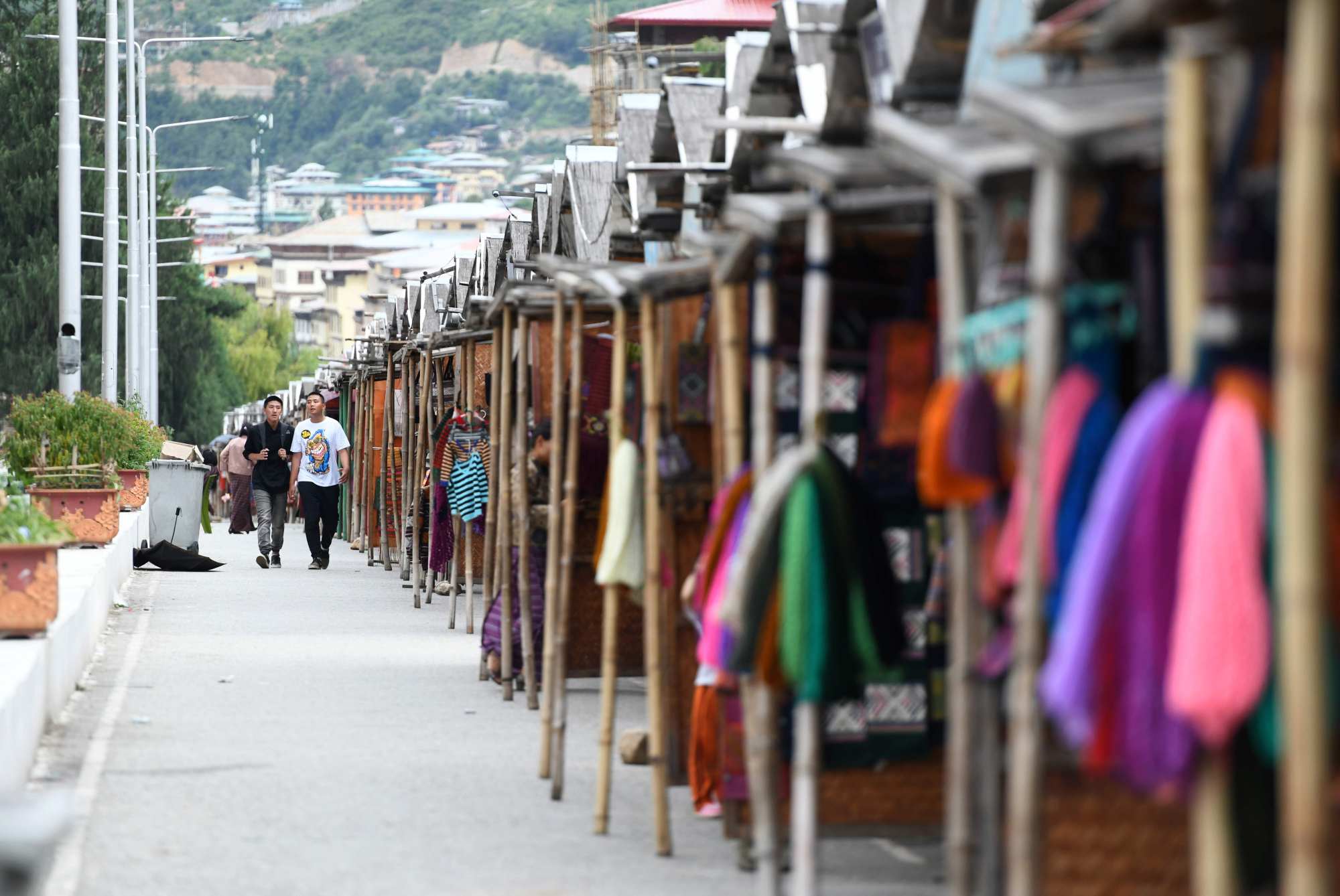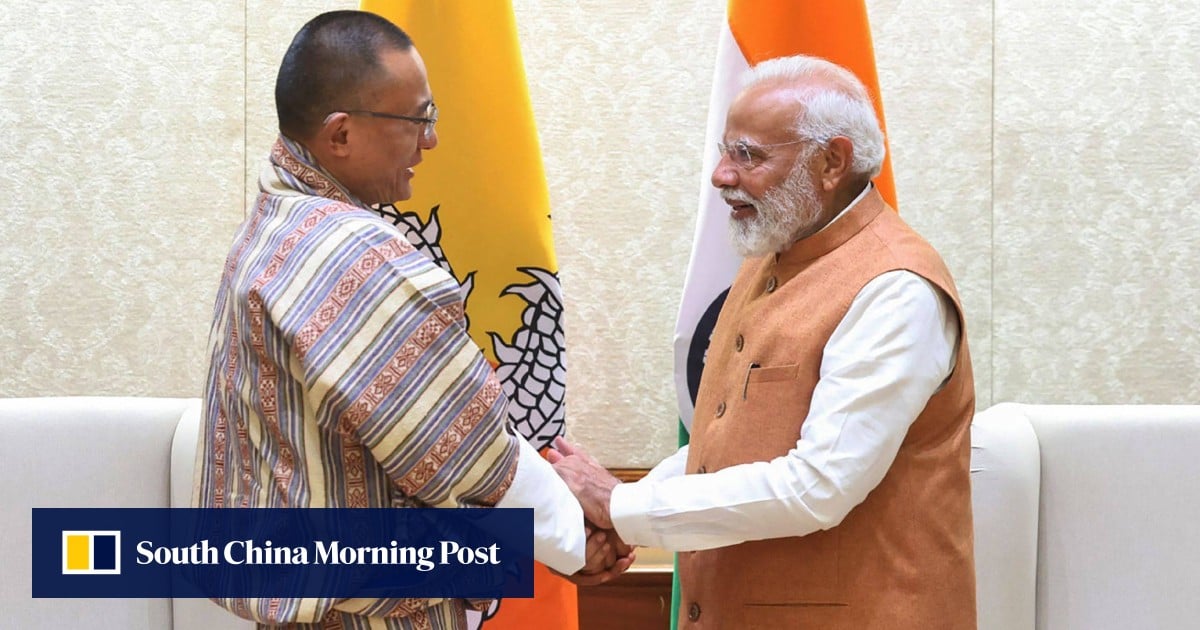“On one hand, Bhutan is trying to demarcate its borders with its aggressive northern neighbour China,” Shivamurthy said. “On the other hand, it is facing an economic crisis and mass migration, and needs India’s support and collaboration more than any other time in the past.”
In ‘big test’ for India, China and Bhutan push for official ties and border fix
In ‘big test’ for India, China and Bhutan push for official ties and border fix
India has two significant tri-junction points involving Bhutan and China. One is in the west, which includes Doklam, and the other is in the east, marking the eastern terminus of the McMahon Line that Delhi uses to define the Sino-Indian border.
China’s increasing presence and influence in Bhutan could pose a threat to India’s security interests.
India and China had a military stand-off at Doklam in 2017, when the Indian Army intervened to halt the construction of a road by the Chinese People’s Liberation Army (PLA) in the contested area.
Bhutan and China also have competing claims over the area, with the former asserting that Doklam is part of its territory and Beijing claiming it as part of its Donglang region. The stand-off lasted for some two months and ended in August 2017 after diplomatic talks between the three countries. China stopped road construction and India withdrew its troops. Satellite imagery, however, has revealed ongoing Chinese construction of military infrastructure in the region.

Shivamurthy, who focuses on broader strategic and security related-developments throughout the South Asian region, said Bhutan was keen to bring its dispute with China to an end.
“Bhutan has to close its disputes, there’s no option B and India knows it. In fact, India has been consistently informed about the progress made in the negotiations,” he said.
In 2021, Bhutan and China signed an agreement to expedite boundary talks with a “three-stage road map”. By October last year, after the 25th round of talks, they agreed on guidelines for a joint technical team to delimit and demarcate the boundary.
Shivamurthy said these talks had also been aimed at soothing India’s concerns. “The negotiations with China will go on. That won’t change. Bhutan cannot ignore there is a military and economic power to its north. But it is trying to assure that Indian interests are respected,” he said.
Strategic location
As a small state squeezed between two large powers, Bhutan has a geopolitically strategic role in the region.
Analyst Amit Ranjan noted that Modi’s first foreign visit after becoming prime minister in 2014 was to Bhutan.
“That was a master stroke. [Modi] began his foreign visits with a smaller South Asian country, which demonstrated India’s strategic priorities,” said Ranjan, a research fellow at the Institute of South Asian Studies, an autonomous research institute at the National University of Singapore.
On December 13, Bhutan officially left the least developed countries (LDCs) category established by the UN General Assembly in 1971.

As Bhutan transitions from a LDC and enters the World Trade Organization, it would require investment and capital to fuel further growth, making its relationship with India all the more significant, Ranjan said.
“So, it will be a test for the Bhutanese leadership, of how they are going to deal with India and how much they are ready to engage with China,” he said.
On March 13, the Indian cabinet approved two agreements with Bhutan on energy efficiency and conservation measures.
Bhutan and India have a strong economic partnership, especially when it comes to hydropower. India is Bhutan’s largest trading partner, largest source of foreign investment and largest importer of its surplus electricity, which makes up about 40 per cent of Bhutan’s revenue.
India contributed 45 billion rupees (US$542 million) to Bhutan’s 12th Five Year Plan, which ended in October 2023, and it has committed to stepping up its assistance in the next blueprint.
The kingdom is seeking to build the “Gelephu Mindfulness City”, 1,000 sq km green economic zone bordering India’s Assam state that is aimed at creating infrastructure and jobs.
Bhutan eyes surge in national happiness with US$15 billion hydropower push
Bhutan eyes surge in national happiness with US$15 billion hydropower push
Ranjan said India needed to maintain tight relations with Bhutan, considering its less-than-favourable relations with some of its immediate neighbours.
“[India doesn’t] have good ties with Afghanistan. With Pakistan, the relationship is at its lowest point in the past 75 years. In Bangladesh, there is a simmering anti-India campaign. So, India wants Bhutan to remain in its good books and not fall into China’s lap,” he said.
Bhutan is the only country in India’s neighbourhood that has not officially joined China’s Belt and Road Initiative.
According to Indian media reports, the government has proposed to build a motorable road connecting Arunachal Pradesh and Assam through Bhutan. But Thimphu is reportedly not enthusiastic about the proposal until its border with China is demarcated.
Ranjan said that while Bhutan might initially resist the plan due to its discussions with China, it would eventually need to prioritise ease of business with India.
As China and Bhutan wind down border feud, alarm bells ring in India
As China and Bhutan wind down border feud, alarm bells ring in India
Meanwhile, Modi’s coming visit to Bhutan would be watched closely by China, Ranjan said.
“India is concerned about Doklam. They don’t want Chinese presence at the tri-junction border, which may cut the ‘chicken-neck’ corridor,” he said, referring to a stretch of land that connects India’s northeastern states to the rest of the country. “And I am sure that Modi on his visit to Bhutan will talk about it with the Bhutanese.”
In 1949, India and Bhutan signed the Indo-Bhutan Treaty of Peace and Friendship, which gave Delhi significant control over Thimphu’s foreign policy and defence in exchange for security guarantees and economic support. Though revised in 2007 to grant Bhutan more autonomy, India still plays a major role in Bhutan’s external affairs.
Nitasha Kaul, an international relations professor at the University of Westminster who specialises in Bhutan, said while the country faced limitations given its dealings with China on diplomatic and border issues, it was cautiously advancing its democratic consolidation and international engagement, given its strong economic ties with India.
“Bhutan’s relationship with China is not hostile but amicable, and it is rooted in the understanding of its long-term and multidimensional orientation towards India,” she said.
“Bhutan’s main aim has been to keep its own domestic politics coherent with its national interest, and avoid the splintering of its political sphere into pro-India and pro-China voices,” Kaul said, adding that during the Doklam dispute, Bhutan made strategic use of silence to avert confrontation with either power.
Kaul said the main threat to the Himalayan region in contemporary times was posed by India-China hostilities, and the Doklam incident very nearly escalated into war.
“Bhutan’s careful diplomatic navigation of the stand-off was a crucial contribution to averting it, thereby illustrating that small states can play a role in war not being a fait accompli on a volatile frontier.”
Pavan K Verma, a former Indian ambassador to Bhutan, said ties between the neighbours were deeply interwoven, and the kingdom consistently consulted India before entering any discussions with China.
“Talks with China on border issues have been going on for many years. China has unresolved border issues with Bhutan and India. And they (Bhutan and India) always consult with each other how to proceed with these negotiations with China, so that they are not only fair but of strategic relevance to both countries,” he said.

